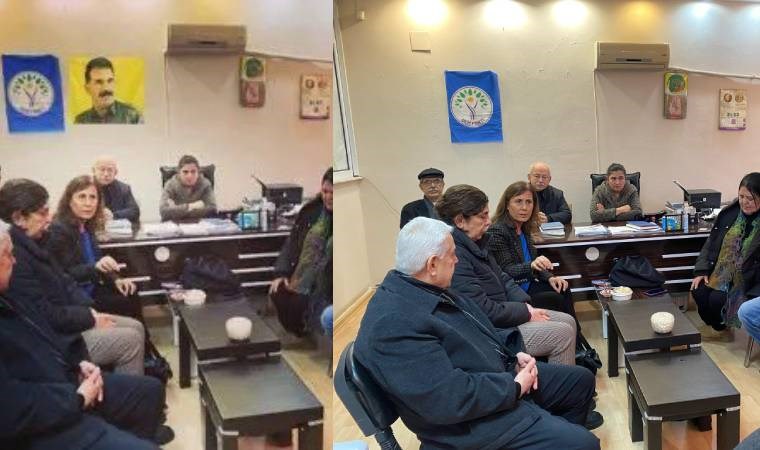The three causes of the Black Sea flooding
Tears are shed along with those from the sky in Ünye, Fatsa and Perşembe.
 Two of Ordu’s sub-provinces, Ünye and Fatsa, that have written their names in history and have spawned folk songs are, to put it bluntly, “weeping.” The sky is pitch black. The hopelessness in the hearts of the people in the centres and villages of the two sub-provinces matches the dimness of the sky. Hazelnuts, the source of many families’ year-round income and whose harvesting demands massive effort, have been, as they themselves put it, “washed into the Black Sea.” Despite the passage of 24 hours, people are somehow incapable of believing that one of the most important bridges joining up the Black Sea coastal road, Cevizlidere Bridge, has collapsed.
Two of Ordu’s sub-provinces, Ünye and Fatsa, that have written their names in history and have spawned folk songs are, to put it bluntly, “weeping.” The sky is pitch black. The hopelessness in the hearts of the people in the centres and villages of the two sub-provinces matches the dimness of the sky. Hazelnuts, the source of many families’ year-round income and whose harvesting demands massive effort, have been, as they themselves put it, “washed into the Black Sea.” Despite the passage of 24 hours, people are somehow incapable of believing that one of the most important bridges joining up the Black Sea coastal road, Cevizlidere Bridge, has collapsed.
With the inhabitants of Ünye’s flood-stricken villages thinking this disaster that has befallen them to have come from God, things are a little different in the centre of Ünye. In Ünye’s centre, by contrast, people are angry about misplaced urbanisation, hydroelectric power stations made in Black Sea provinces, bridges whose foundations were laid without taking account of the region’s climate and industrial plant. Comments are doing the rounds, “Before doing something somewhere, you must familiarise yourself with that place’s peculiarities. If you do not do so, you must also endure the disaster that has randomly struck this sub-province decked in green and blue hues throughout and take responsibility for this disaster.”
Just as our wounds are bandaged...
One of the villages to have suffered the greatest loss in the flood disaster in Ünye is Yiğitler village, which accommodates around 150 houses including those famous Black Sea village houses nestling in the forest. There are 50 houses of the Öztürk family in the village’s Eğrimeşe Quarter. And the members of this family have suffered the greatest loss. With two months’ labour having been devoted to the hazelnuts which they do not actually think to have been worth the money in recent years, this two months’ labour of theirs was washed into the sea by the floodwater. As the villagers put it, “Capital has been washed into the Black Sea.” Somebody is in tears in virtually every home we visit. Even though we announce ourselves to be journalists, they look on us as if we were state officials. Regardless of which house’s door we knocked at, they would say, “Give the AKP, the MHP and the CHP a call. Call our mayor, too. Let them come here. Our houses are about to collapse.” They were left as mere onlookers as the hazelnuts they had gathered a mere day before the flood disaster mixed into the flood water and washed into the Black Sea.
Villager Gülsüm Öztürk, who has two children as well as grandchildren from the two children, recounts, “We had got up in the morning and were making breakfast like every day. Suddenly, an almighty noise broke out. The kids started to cry.” She indicates that next before they knew what was happening they saw the flood suddenly carrying away the mighty trees and those trees’ trunks suddenly hit the houses and their houses started to shake. Gülsüm Öztürk’s house suffered serious damage from being struck by tree trunks. She states that, despite this, they will continue to live there because they have no other place to go.”
“Either the state will come or the state will come!”
Fellow family member Hüsne Öztürk’s home faces the risk of landslide. Pointing to the landslip in front of the house and the house’s damaged road, she says, “My house is in danger. Either the state will come or the state will come. They will put up a barricade here. The front of the house is empty. If gravel, cement and iron are not put in place, we will be dragged downwards, downwards as a family.”
Mound of earth in front of the house
A house just beyond the village attracts our attention. The house has no approach. Soil washed down by the flood had fully covered the approach to the house. To enable access to the house, you have to pass over a mound of earth forming a small hill. And the house’s owner Ahmet Öztürk has been trying since the evening before last to get through that hill with pick and shovel.
Eighty thousand tonnes of hazelnuts lost
On entering Ünye and Fatsa, the Black Sea is far from blue. The soil dragged down with the flood flowed unaltered into the sea. While half of the sea is blue, half of it is brown. Eighty thousand tonnes of hazelnuts are known to have flown into the sea. Many hazelnut and maize fields are submerged. Picking up the mud that the submerged soil has formed, they say, “We have buried our labour in mud.”
Oktay: Not as extensive as in the press
Deputy President Fuat Oktay, arriving in Ordu following the flood disaster, noting that more care would subsequently be taken over housing and commercial premises made on stream beds, said, “Our President’s expectation is also along these lines. We must be prepared for this. We must take our precautions not after a disaster happens, but before. We must bring about the necessary transformation in this regard first mentally and then on the structural dimension.” Noting that there had been no loss of life in the flood disaster, Oktay notably commented, “The extent of the damage is thankfully of a lower magnitude than the perception in the press and media.”
Enginyurt: Hazelnut price should be 15 lira
MHP Ordu MP Cemal Enginyurt said in a comment he made to Cumhuriyet, “Ordu also experienced a similar flood disaster two years ago. We said on that day, too, that the State Hydraulic Works immediately needed to carry out remedial work on the stream bed and the areas in which the streams enter the sea needed to be unclogged and opened up. Such a disaster was reexperienced due to the failure for these measures to be taken.” Saying that Ordu should urgently be included within disaster measures, Enginyurt noted, “The floor price for hazelnuts should be announced to be 15 lira to boost morale.” Enginyurt said that MHP General Chair Devlet Bahçeli had sent an investigation commission into the flood area along with Deputy General Chair Yaşar Yıldırım.
Torun: We should have a national climate policy
CHP Deputy General Chair Seyit Torun made the assessment, “We repeat our call for the development of a national climate policy as a country. A national climate and environmental policy that is compatible with global climate change and addresses the world’s situation today must be drawn up in the shortest time, and we must move on to implementing it. It will not remain on paper. We need a programme and steps to be taken.” A commission has also been sent into the flood are chaired by Good Party Deputy General Chair Musavvat Dervişoğlu.
Selfies
For the people of Ünye, the collapse of the historical Cevizdere Bridge built in the past by Armenians to enable transport between Ünye and Fatsa resembles, to put it bluntly, the disappearance of a marvel. In fact, the people are also comparing the loss of this marvel to the sinking of the supposedly unsinkable Titanic. So much so that the people of Ünye are closely watching the municipality’s bridge dismantling work and taking selfies each moment. Some of them in turn are examining the wreckage of the bridge bit by bit with eyes that appear to be asking incredulously how such a bridge could collapse. As to warnings that the work could be dangerous, they pay no heed. There are even those who say, “Ünye’s symbol has fallen victim to flood water and the flood has also washed away our memory and recollections. We want to immortalise each and every instant.”
The three causes of the flooding
Architects and engineers point out that there are three causes of the flood disaster that has been continuing along the Black Sea for days and bursting streams with its force:
-Construction on stream beds: Referring to the licensing of residential property made on stream beds under planning amnesties, the Union of Chambers of Turkish Engineers and Architects (UCTEA) pointed out that the water was prevented from reaching the sea by natural means thanks to the covering up of streams and concreting over of stream beds.
-Black Sea coastal road: The Cevizdere Bridge located on the Black Sea coastal road was demolished in the flood. According to the UCTEA, the obstacle created by the Black Sea road prevents streams from reaching the Black Sea. Infill areas have left the region virtually defenceless against flooding.
-Hydroelectric power stations and mining: In the past ten years, 203 hydroelectric power stations have been made along the Black Sea. There were 20 hydroelectric power station projects under construction in 2017. A further 123 hydroelectric power stations are at the study and planning stage. The UCTEA pointed out that stream flow regimes had been disturbed because of the hydroelectric power stations. It also noted that the natural plant cover in the region was also being destroyed due to intensifying hydroelectric power station and mining activity in the region.
Urban sprawl
UCTEA Chair Emin Koramaz said, “We continually encounter the same scenes in our Eastern Black Sea region in the rains that are experienced in the same periods of the year: streams overflow, houses on stream beds become submerged and part of the Black Sea coastal road collapses. This situation shows that what we are experiencing is not a disaster but the result of unplanned and sprawling urbanisation.”
Disaster resulting from amnesty
In the assessment made by the chairs of UCTEA-affiliated chambers, they stressed that this result had been encountered due to the government’s failure to take the necessary measures despite warnings.
-UCTEA Town Planners Chamber Chair Orhan Sarıaltın: Places that should not be built on like stream beds are opened for development. The government conducts planning amnesties and engages in practices that result in these being legalised and subsequent reversal being made impossible. The Black Sea coastal road was hastily made in many places using infill. The failure for decent infrastructure to be made just as it was done using infill in the coastal area entails very serious problems in any rainy environment.
-UCTEA Agricultural Engineers Chamber Chair Özden Güngör: Last year the hazelnut price was around 10 lira and the cost of hazelnuts is 10 lira anyhow. The government should implement a pricing policy that is not detrimental to hazelnut producers following this disaster. We had previously announced that hazelnut production, which stood at 670,000 tonnes in 2017, would fall to 550,000 tonnes this year due to extreme drought and unoccasioned rains and storms. We saw the flood pour 30,000 tonnes of hazelnuts into the sea yesterday. This situation harbingers a further worsening of our agriculture as it actually currently stands and a further fall in our income. The government should be at the side of the producers, not companies.
-UCTEA Environmental Engineers Chamber Chair Baran Bozoğlu: When we look at areas where there are collapsed buildings and urbanisation, we see that areas that are liable to be covered in water have been opened for development. Initially, there is a need not to construct on stream beds and places that will retain water. The buildings that are made impede the conditions that enable water to reach the sea. Under such circumstances, water demolishes the buildings in its path and passes. Advance warning systems with regard to climate change should be created. Citizens living there must perhaps be informed very speedily by mobile phone message and advance precautions taken.

En Çok Okunan Haberler
-
 THY krizi büyüyor
THY krizi büyüyor
-
 Vali koltuğuna oturan öğrencinin sözleri gündem oldu
Vali koltuğuna oturan öğrencinin sözleri gündem oldu
-
 CHP'ye yeni transferler: Rozeti Özel takacak
CHP'ye yeni transferler: Rozeti Özel takacak
-
 Oya Tekin’den Cumhurbaşkanı Başdanışmanına tepki
Oya Tekin’den Cumhurbaşkanı Başdanışmanına tepki
-
 Emre Belözoğlu'ndan maç sonu tepki
Emre Belözoğlu'ndan maç sonu tepki
-
 Erdoğan, Özgür Özel ile bir araya geldi!
Erdoğan, Özgür Özel ile bir araya geldi!
-
 İsmailağa ikiye bölündü!
İsmailağa ikiye bölündü!
-
 Bakanlık, Müge Anlı'daki yayını ihbar kabul etti
Bakanlık, Müge Anlı'daki yayını ihbar kabul etti
-
 Cumhurbaşkanı Başdanışmanından provokasyon!
Cumhurbaşkanı Başdanışmanından provokasyon!
-
 'Kanal İstanbul projesi' karara rağmen sürüyor
'Kanal İstanbul projesi' karara rağmen sürüyor

















